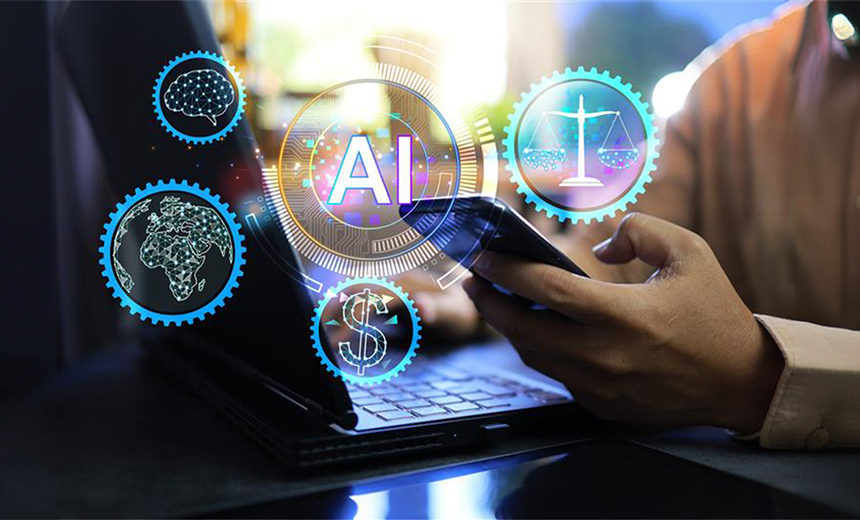Understanding AI's Learning Process: Towards Responsible AI Development

Table of Contents
Different Paradigms of AI Learning
AI doesn't "learn" like humans do; it utilizes algorithms and data to improve its performance on specific tasks. Several paradigms define how AI systems acquire knowledge:
Supervised Learning
In supervised learning, the AI model is trained on a labeled dataset, where each data point is paired with its correct output. This is akin to a teacher guiding a student. The algorithm learns to map inputs to outputs based on this labeled data.
- Examples: Image classification (identifying objects in images), spam detection (classifying emails as spam or not spam), medical diagnosis (predicting diseases based on patient data).
- Challenges: Requires vast amounts of accurately labeled data, which can be expensive and time-consuming to collect and annotate. Furthermore, biases in the training data can lead to biased predictions. For instance, a facial recognition system trained primarily on images of one ethnicity might perform poorly on others. This highlights the importance of diverse and representative datasets in the AI learning process.
Unsupervised Learning
Unsupervised learning involves training an AI model on unlabeled data. The algorithm identifies patterns, structures, and relationships in the data without explicit guidance. This is similar to how a child learns to recognize objects and patterns without direct instruction.
- Examples: Customer segmentation (grouping customers based on purchasing behavior), anomaly detection (identifying unusual data points), dimensionality reduction (reducing the number of variables in a dataset while preserving important information).
- Challenges: Interpreting the results can be complex. The algorithm might identify spurious correlations instead of meaningful patterns. It requires careful analysis and validation to ensure the discovered patterns are indeed relevant and insightful. Understanding the nuances of this method is vital for a thorough grasp of the AI learning process.
Reinforcement Learning
Reinforcement learning involves training an AI agent to interact with an environment and learn through trial and error. The agent receives rewards for desirable actions and penalties for undesirable ones. This process is iterative, with the agent constantly adjusting its actions to maximize its rewards.
- Examples: Game playing (AlphaGo), robotics control (teaching a robot to navigate a complex environment), resource management (optimizing the use of resources in a dynamic system).
- Challenges: Can be computationally expensive and time-consuming. The design of the reward function is crucial and needs careful consideration; poorly designed rewards can lead to unexpected and undesirable behavior. This emphasizes the need for rigorous testing and evaluation in the AI learning process.
The Crucial Role of Data in AI Learning
Data is the fuel that powers AI learning. The quality and characteristics of the data directly influence the performance and reliability of the AI model.
Data Quality
High-quality data is the cornerstone of successful AI development. The acronym GIGO (Garbage In, Garbage Out) perfectly encapsulates this point. Key aspects of data quality include:
- Accuracy: Data should be free from errors and inconsistencies.
- Completeness: The dataset should contain all necessary information.
- Consistency: Data should be formatted uniformly.
- Relevance: The data should be pertinent to the task the AI is trying to learn.
Poor data quality results in biased outcomes, inaccurate predictions, and unreliable AI models. This directly impacts the effectiveness of the AI learning process.
Data Bias and Mitigation
AI systems can inherit and amplify biases present in the training data, leading to unfair or discriminatory outcomes.
- Examples: Facial recognition systems exhibiting higher error rates for certain ethnic groups, loan applications being unfairly rejected based on biased historical data.
- Mitigation strategies: Careful data curation to ensure representation of all relevant groups, the use of bias detection algorithms to identify and mitigate biases in data and models, and the implementation of fairness-aware machine learning techniques to ensure equitable outcomes. Addressing data bias is critical for responsible AI and a crucial element of the AI learning process.
Ethical Considerations in AI Development
The development and deployment of AI systems raise significant ethical concerns that must be addressed proactively.
Transparency and Explainability
Understanding how an AI system arrives at its conclusions is paramount for trust and accountability. However, many AI models, especially deep learning models, are considered "black boxes," making it difficult to comprehend their internal workings.
- Challenges: Lack of transparency can lead to mistrust and hinder the adoption of AI systems.
- Solutions: Explainable AI (XAI) techniques are being developed to improve the interpretability of AI models. These methods aim to provide insights into the decision-making process of the AI.
Privacy and Security
AI systems often process sensitive personal data, raising privacy and security concerns. Protecting user data from unauthorized access and misuse is essential.
- Challenges: Data breaches and misuse of personal information can have severe consequences.
- Solutions: Data anonymization techniques, differential privacy (adding noise to data to protect individual identities), and robust security measures are needed to safeguard user data.
Accountability and Responsibility
Determining who is responsible when an AI system makes a mistake or causes harm is a complex issue requiring clear guidelines and regulations.
- Challenges: Establishing clear lines of responsibility across the development, deployment, and use of AI systems.
- Solutions: Establishing ethical guidelines, regulations, and legal frameworks for AI development and deployment are necessary.
Conclusion
Understanding the AI learning process is paramount for developing responsible and ethical AI systems. By comprehending the various learning paradigms, prioritizing data quality, and addressing ethical considerations, we can harness the power of AI while mitigating potential risks. The future of AI depends on our collective commitment to building AI systems that are not only effective but also fair, transparent, and accountable. Let's continue exploring the intricacies of the AI learning process to build a better future with AI. Learn more about optimizing your AI development process and implementing responsible AI best practices through further research and engagement in the field.

Featured Posts
-
 Receta Facil De Empanadas De Jamon Y Queso Sin Horno
May 31, 2025
Receta Facil De Empanadas De Jamon Y Queso Sin Horno
May 31, 2025 -
 Elon Musk And Dogecoin Reflecting On The Trump Years
May 31, 2025
Elon Musk And Dogecoin Reflecting On The Trump Years
May 31, 2025 -
 Understanding April Rainfall Total Precipitation And Trends
May 31, 2025
Understanding April Rainfall Total Precipitation And Trends
May 31, 2025 -
 Womans Basement Holds Unexpected Surprise For Plumber
May 31, 2025
Womans Basement Holds Unexpected Surprise For Plumber
May 31, 2025 -
 Severe Storms Possible Across Carolinas Tracking Active Vs Expired Weather Alerts
May 31, 2025
Severe Storms Possible Across Carolinas Tracking Active Vs Expired Weather Alerts
May 31, 2025
